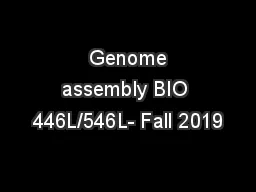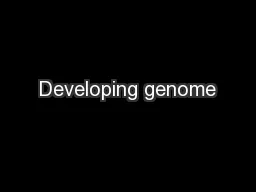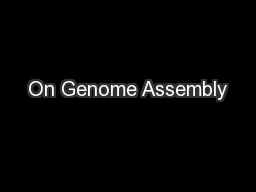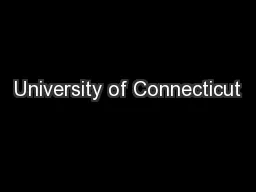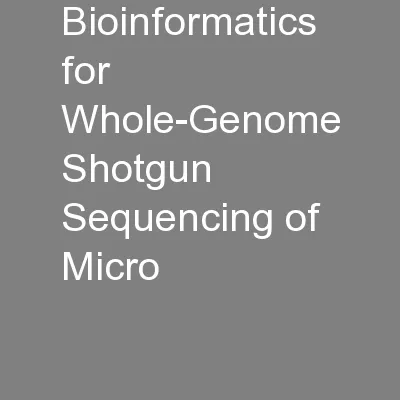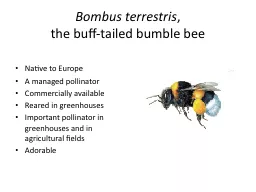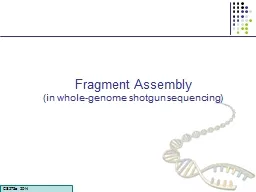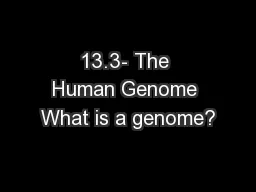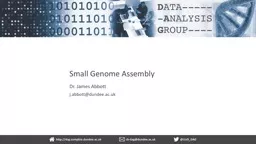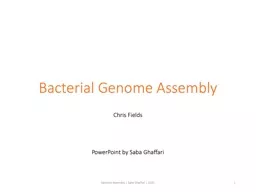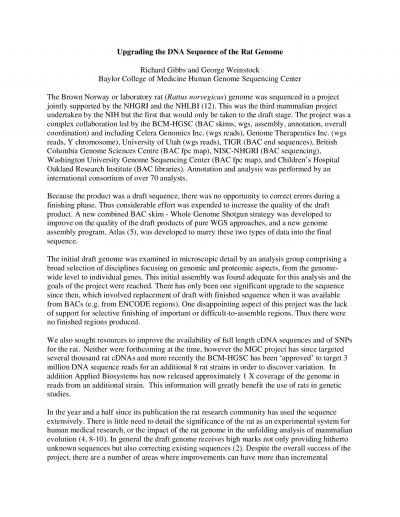PPT-Genome assembly BIO 446L/546L- Fall 2019
Author : aaron | Published Date : 2020-04-03
Purbendra yogi Introduction Genome assembly is the process of taking of many short DNA sequences and combine them to form original chromosome First generation Assembly
Presentation Embed Code
Download Presentation
Download Presentation The PPT/PDF document " Genome assembly BIO 446L/546L- Fall 201..." is the property of its rightful owner. Permission is granted to download and print the materials on this website for personal, non-commercial use only, and to display it on your personal computer provided you do not modify the materials and that you retain all copyright notices contained in the materials. By downloading content from our website, you accept the terms of this agreement.
Genome assembly BIO 446L/546L- Fall 2019: Transcript
Download Rules Of Document
" Genome assembly BIO 446L/546L- Fall 2019"The content belongs to its owner. You may download and print it for personal use, without modification, and keep all copyright notices. By downloading, you agree to these terms.
Related Documents

